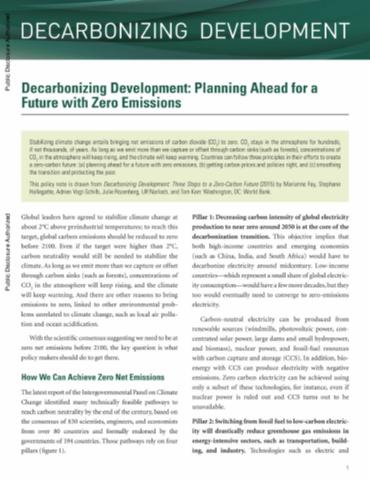The World Bank is a vital source of financial and technical assistance to developing countries around the world. We are not a bank in the ordinary sense but a unique partnership to reduce poverty and support development. The World Bank Group has two ambitious goals: End extreme poverty within a generation and boost shared prosperity.
- To end extreme poverty, the Bank's goal is to decrease the percentage of people living on less than $1.25 a day to no more than 3% by 2030.
- To promote shared prosperity, the goal is to promote income growth of the bottom 40% of the population in each country.
The World Bank Group comprises five institutions managed by their member countries.
The World Bank Group and Land: Working to protect the rights of existing land users and to help secure benefits for smallholder farmers
The World Bank (IBRD and IDA) interacts primarily with governments to increase agricultural productivity, strengthen land tenure policies and improve land governance. More than 90% of the World Bank’s agriculture portfolio focuses on the productivity and access to markets by small holder farmers. Ten percent of our projects focus on the governance of land tenure.
Similarly, investments by the International Finance Corporation (IFC), the World Bank Group’s private sector arm, including those in larger scale enterprises, overwhelmingly support smallholder farmers through improved access to finance, inputs and markets, and as direct suppliers. IFC invests in environmentally and socially sustainable private enterprises in all parts of the value chain (inputs such as irrigation and fertilizers, primary production, processing, transport and storage, traders, and risk management facilities including weather/crop insurance, warehouse financing, etc
For more information, visit the World Bank Group and land and food security (https://www.worldbank.org/en/topic/agriculture/brief/land-and-food-security1
Resources
Displaying 936 - 940 of 4906Decarbonizing Development
Stabilizing climate change entails bringing net emissions of carbon dioxide (CO2) to zero. CO2 stays in the atmosphere for hundreds, if not thousands, of years. As long as we emit more than we capture or offset through carbon sinks (such as forests), concentrations of CO2 in the atmosphere will keep rising, and the climate will keep warming. Countries can follow three principles in their efforts to create a zero-carbon future: (a) planning ahead for a future with zero emissions, (b) getting carbon prices and policies right, and (c) smoothing the transition and protecting the poor.
Social and Economic Impacts of Rural Road Improvements in the State of Tocantins, Brazil
The aim of this paper is to provide
feedback on the question of socioeconomic benefits from
rural road development and the impact of transport
infrastructure on the poor, particularly the poorest and the
bottom 20 percent of the population. This paper relies on
impact evaluation methodologies, which are traditionally
used in social sectors but less so in the transport sector.
The study, including first surveys, was launched in 2003
Good Countries or Good Projects?
This paper examines the micro and macro
correlates of aid project outcomes in a sample of 3,821
World Bank projects and 1,342 Asian Development Bank
projects. Project outcomes vary much more within countries
than between countries: country-level characteristics
explain only 10–25 percent of project outcomes. Among macro
variables, country growth and the policy environment are
significantly positively correlated with project outcomes.
Labor Productivity and Employment Gaps in Sub-Saharan Africa
Drawing on a new set of nationally
representative, internationally comparable household
surveys, this paper provides an overview of key features of
structural transformation—labor allocation and labor
productivity—in four African economies. New, micro-based
measures of sector labor allocation and cross-sector
productivity differentials describe the incentives
households face when allocating their labor. These measures
Are Women Less Productive Farmers?
African governments and international
development groups see boosting productivity on smallholder
farms as key to reducing rural poverty and safeguarding the
food security of farming and non-farming households.
Prompting smallholder farmers to use more fertilizer has
been a key tactic. Closing the productivity gap between male
and female farmers has been another avenue toward achieving
the same goal. The results in this paper suggest the two are







